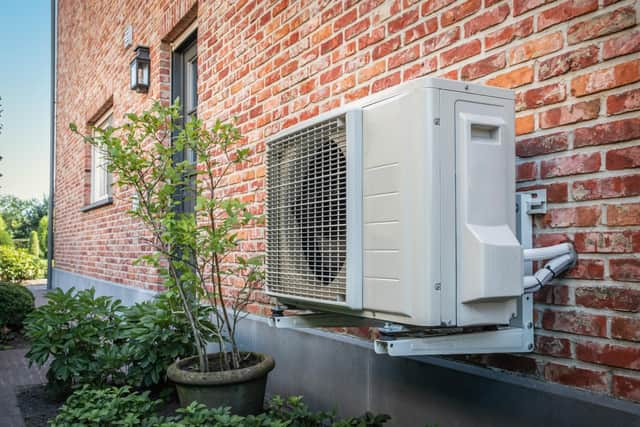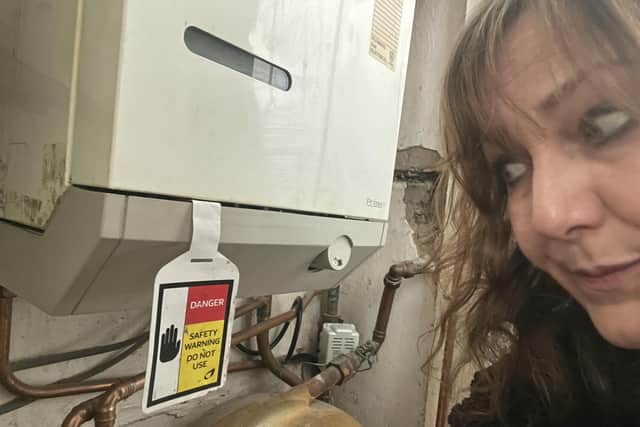Heat pumps versus gas boilers: Why the move to green heating could leave me out in the cold
The date will apply to both off-grid buildings and those on the gas network, with some exemptions for premises that cannot be made compliant.
The journey to that new green frontier has already begun. However, it seems that I may not be travelling any time soon.
Advertisement
Hide AdAdvertisement
Hide AdAnd it’s not because I don’t want to get on board. It seems I just can’t get a ticket.
Why? Well it’s not me, apparently, it’s the property.
This sorry tale began last week, when my trusty old boiler spontaneously sprung a major gas leak.
And now, following in-depth investigations and fruitless searches for obsolete parts, it has been condemned.
Yes, you probably told me so.


I inherited the boiler when I moved to the flat around 17 years ago and it has been doing its thing fairly reliably ever since.
It was top quality at the time, the engineers tell me, but that was about 30 years ago – the model was discontinued in 1997.
It’s fair to say the device has been on death row for a while, but that hasn’t made its demise much easier to accept.


I had long been mulling the pros and cons of getting a heat pump system, so now seemed the logical, if inconvenient, time to take that next big green step – especially since the government is handing out grants to help encourage uptake.
So I called up the shiny new heat pump branch of my supplier to arrange a survey and quotation, just to see what I would be in for.
Advertisement
Hide AdAdvertisement
Hide AdAfter a few questions about the property – like its age, whether it was a house or a flat, the number of rooms and radiators, plus any energy-efficiency measures in place – I got an installation figure of £14,299, of which up to £7,500 would be paid by the grant.
Forget green, I turned white.
But as it turns out, the company will not come out to even assess the job if your energy-efficiency measures, like mine, are not up to scratch.
I live in a listed Georgian tenement flat, built in the 1800s out of stone, with 10ft-high ceilings and big sash-and-case windows, so no loft or cavity-wall insulation and only single-glazing.
That was the first problem.
Then came the deal-breaker.
To actually install the heat pump you need to have a privately owned outside area big enough to site the device, which was fine for me as it’s a ground-floor flat. However, that firm’s fitters will not carry it through your home to get it to the back garden so you need to have an alternative access route.
Aha, I thought, through the communal stairwell and out the back door. But alas no, it’s too narrow – any door or gate needs to be at least 1m wide to get the hulking great thing through.
Just like that, my eco credentials have gone up in smoke. As, I presume, will be the case for most tenement-dwellers in Scotland’s main towns and cities.
As I write, a gas engineer has just left the premises after measuring up for a new ‘dirty’ gas boiler, and not a care in the world about my draughty old home’s energy-efficiency standards.
So it looks like I’ll be continuing to pollute the environment for the time being – if I don’t freeze to death first. Sorry, planet.
Advertisement
Hide AdAdvertisement
Hide AdIn the meantime, there are a few ways everyone can save energy and keep bills as low as possible.
Advice from Elmhurst Energy, a company specialising in building performance assessments, includes: insulating lofts, since a quarter of home heat can escape through the roof, and cavity walls and lagging your hot water tank.
Only use an immersion heater when you need it and don’t waste hot water – you can turn down thermostats to around 60C, switch from baths to showers, don’t overfill the kettle and wait until dishwashers and washing machines are full before running a cycle.
Use a programmable thermostat for your heating, setting it to 15C-16C at night and 18C-20C during the day, depending on activity levels.
Switch to energy-saving lighting – LED bulbs last up to 25 times longer than traditional incandescent versions and cost much less to run.
Draught-proof your home – this can be as simple as keeping doors closed, using draught-excluders round doors, windows and loft hatches, covering keyholes and letterboxes and stuffing unused chimneys.
If you want a more empirical assessment of your home’s strengths and weaknesses, you can get an assessor out to give you an Energy Performance Certificate (EPC) with recommendations on actions to take to improve it.
Comments
Want to join the conversation? Please or to comment on this article.